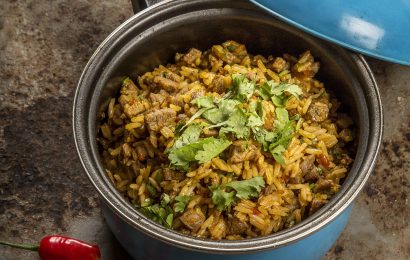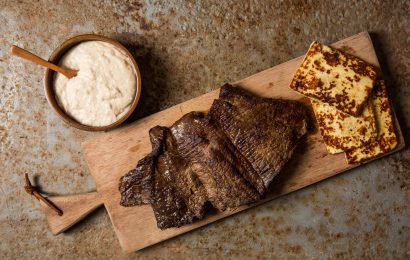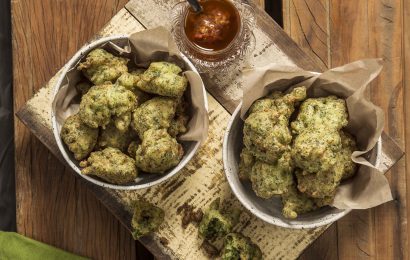
Makes: 6 servings

Preparation Time: 2 hours

Level: Medium
INGREDIENTS
- 1 KG DESALTED CARNE-SECA, CHOPPED INTO CUBES
- 2 TABLESPOONS OLIVE OIL
- 2 TABLESPOONS DENDÊ OIL
- 2 ONIONS
- 3 CUPS COCONUT MILK
- 2 CUPS DRIED SHRIMPS, DESALTED
- 2 TABLESPOONS CORN OIL
- 2 GARLIC CLOVES, CHOPPED
- 2½ CUPS LONG-GRAINED WHITE RICE
- SALT TO TASTE
SAUCE
- ½ MEDIUM ONION
- 1 TOMATO, PEELED AND SEEDED
- ½ CUP DRIED SHRIMP, DESALTED
- ½ MALAGUETA PEPPER
- 1 TABLESPOON OLIVE OIL
- 1 TABLESPOON DENDÊ OIL
- JUICE OF ½ LIME
PREPARATION
Cook carne-seca until tender. Heat 1 tablespoon of olive oil and 1 tablespoon of dendê oil. Add 1 onion cut into thin slices and sauté, until soft. Add carne-seca and fry for 10 minutes, stirring, so meat doesn’t stick on the pan. Add ¾ cup of coconut milk and 1 cup of dried shrimp; let dry a little and set aside. Prepare the rice: heat the oil and stir-fry ½ chopped onion and garlic. Add rice and 5 cups of lukewarm water; season with salt. When it gets tender, add ¾ cup of coconut milk and transfer the rice to a ring mold; set aside. Heat the rest of the olive oil and dendê oil and sauté ½ chopped onion with 1 cup of dried shrimp. Add coconut milk, cook for 2 minutes and set aside.
Prepare the sauce: blend onion, tomato, dried shrimp and malagueta pepper in a blender. Stir this paste with olive oil combined with dendê oil; season with lime juice. Unmold the rice from the ring mold and place the meat around it and inside the hole. Cover with dried shrimp cooked with coconut milk and serve with the sauce.
In detail
Câmara Cascudo registered the origins: ‘Haussás, muslim sudaneses from Nigeria, had left in Salvador a dish with rice which honors their name, hauçá rice, kept by baianos from the capital”. Chronics from that time mention that it was Ruy Barbosa’s favourite dish. He would have said, mistakenly, that the word “hauçá” was a corruption of “water and salt” (água e sal).



